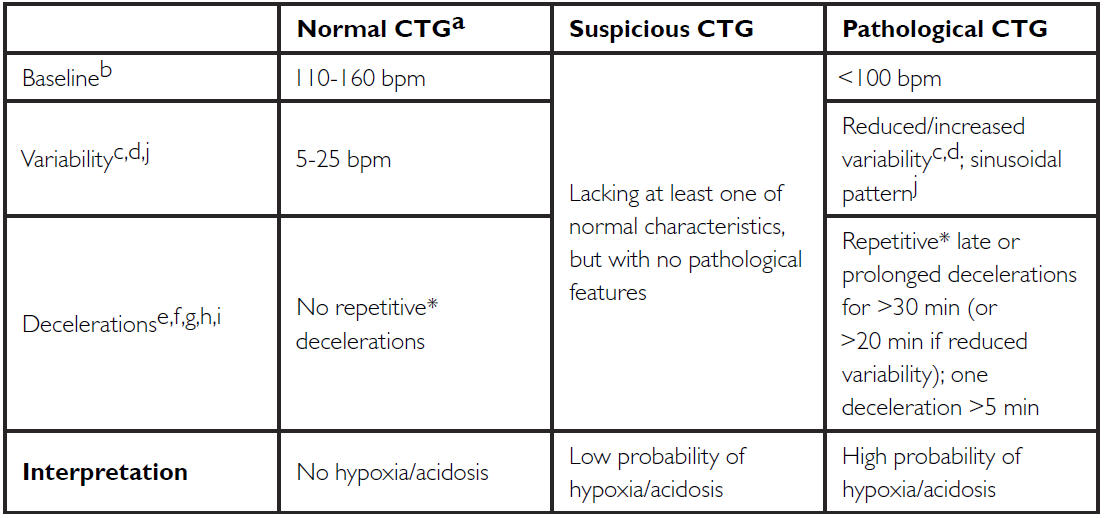Fetal Heart Rate Analysis

Image Credit: The 2015 FIGO intrapartum cardiotocography classification system in summary
Fetal Heart Rate (FHR) monitoring is routinely used to help obstetricians assess fetal health status during delivery. In daily clinical practice, FHR is mostly examined visually following the guidelines edited by national and international scientific societies, such as the International Federation of Gynecology and Obstetrics (FIGO), that mostly focus on decelerations and accelerations, long term variabilities, and baseline levels and trends.
Instead of performing the analysis of variability at pre-defined time scales proposed in the FIGO clinical guidelines, the originality of this project is to embrace the scale invariance paradigm which measures the relationship between the data variability across several scales.
Related Publications
-
Sparse Support Vector Machine for Intrapartum Fetal Heart Rate Classification,IEEE Journal of Biomedical and Health Informatics, 2017.
-
Intrapartum Fetal Heart Rate Classification from Trajectory in Sparse SVM Feature Space,Annual International Conference of the IEEE Engineering in Medicine and Biology Society (EMBC), 2015.
-
P-Leader Multifractal Analysis and Sparse SVM for Intrapartum Fetal Acidosis Detection,Annual International Conference of the IEEE Engineering in Medicine and Biology Society (EMBC), 2015.